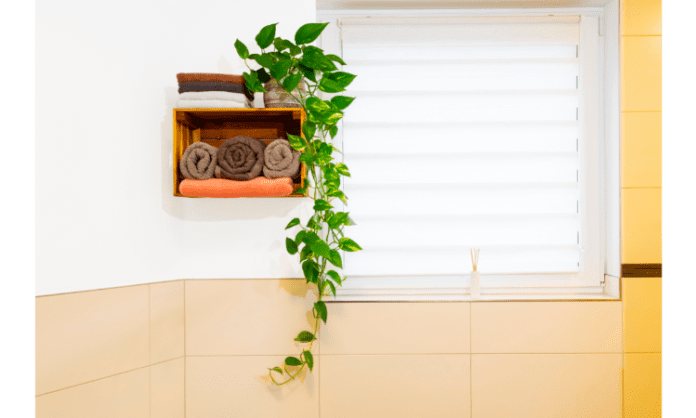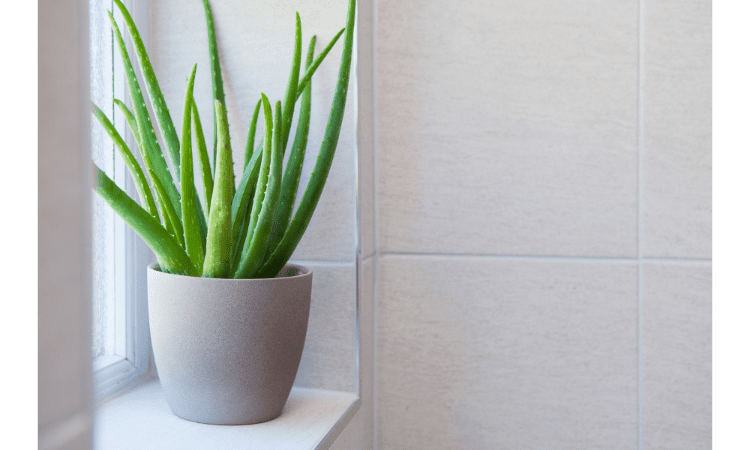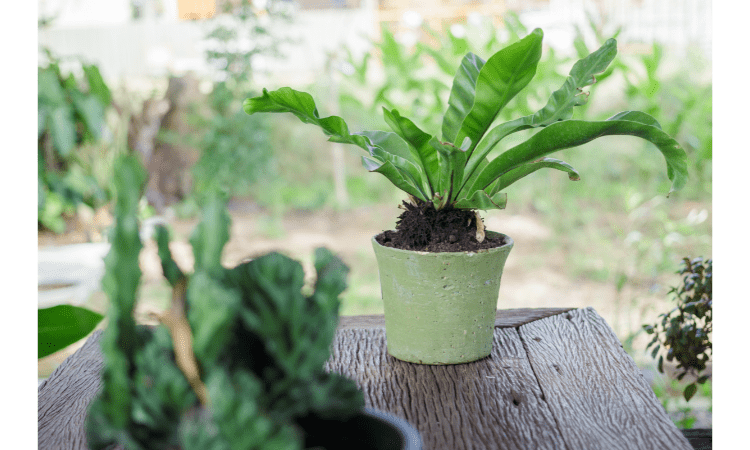
Your bathroom is a place that you go to unwind and relax. After a long, hard day of work, you deserve to have five minutes of peace in your own home. A great way to relax is by adding plants to your bathroom! Not only do plants make bathrooms more beautiful, they also help purify the air and can add scents like citrus or mint to the room. If your bathroom is large enough, consider getting several different types of plants for an urban jungle feel. No matter what kind of space you’re dealing with, it’s easy to find a plant that will fit in your bathroom and make it even more soothing than before. We’ve compiled this list of the best plants for bathrooms so that it’s easier for you to decide which plant will be right for your home.
Aloe vera

Aloe vera is a succulent plant, so it’s easy to care for. It also makes a good air purifier in the bathroom. You should know that aloe plants can be grown as small houseplants or allowed to grow into large outdoor specimens if you have the space and inclination.
Aloe plants need very little water, which makes them ideal for bathrooms where you don’t want to worry about overwatering your plants and potentially damaging them by exposing them to too much moisture.
Boston fern

Boston ferns are easy to care for, and they make great additions to the bathroom. While they do prefer indirect light, you can still place them near a window or in front of your vanity mirror without causing any harm to the plant. You will want to mist them every few days with water from a spray bottle, and you should also check the soil every week or so and water if it feels dry. Every year, repot Boston ferns into slightly larger pots so that their roots have room to grow.
Snake plant

The snake plant, or mother-in-law’s tongue (Sansevieria trifasciata), is a hardy plant that can survive in the bathroom. It thrives in hot, dry conditions and requires little maintenance.
- Care: Snake plants need very little water, so you should be able to care for them on your own. The only thing you really have to do is make sure they stay out of direct sunlight and don’t dry out too much between waterings since they are succulents.
- Repotting: Snakes grow slowly but they need more space as they get bigger so repot them once every two years or so into a pot with fresh soil if possible (or at least mix some new soil into the old).
- Propagating: Snakes like taking root in clusters; this way, each new shoot has access to moisture and nutrients from its neighbors’ roots when planted close together in an empty pot rather than being spaced apart by themselves where there’s nothing else around except air.
Areca palm

The areca palm is a tropical plant that can survive both indoors and outdoors in many climates. Its bright, shiny green leaves are beautiful and easy to maintain. The areca palm is a slow-growing tree, but it will grow to be several feet tall if you give it the space to do so. When choosing an indoor or outdoor location for your areca palm tree, make sure there is plenty of light exposure during the day so that its leaves remain healthy.
The best time of year to plant this tree is spring or summer before temperatures start rising significantly above 70 degrees Fahrenheit (21 C). This gives the new roots enough time within their growing season before turning colder later on in fall/winter where growth slows down significantly with cold weather conditions like snowfall which could potentially kill off any tender new growth from coming back next spring season after winter months expire again.”
Money plant

If you’re looking for a plant that will survive in any environment and withstand the harsh light of a bathroom, look no further than the money plant. This small shrub is an excellent choice for bathrooms because it is both easy to care for and low maintenance.
Money plants are often referred to as epiphytes, which means they grow on trees and other large plants without harming them. They can adapt very easily to different conditions and do not need much water or sunlight. While this might sound like a disadvantage, it makes them perfect candidates for indoor growing.
Cast iron plant

The cast iron plant is a slow growing plant, but it’s not fussy. It can grow in low light levels, so it’s ideal for a bathroom where there’s not much natural light. You can keep this succulent style of plant in pots or hanging baskets and place them on your windowsill, or on a table beside the tub.
Orchids

Orchids are a great choice for the bathroom. They can tolerate humidity, which is important in a bathroom environment. To keep your orchid healthy and happy, you should water it once every 3-4 days and give it some fertilizer about once a month.
Orchids are also easy to care for because they don’t need much light; they grow best in indirect or filtered light. You should also avoid exposing them to direct sunlight as this will scorch their leaves and even cause them to burn up.
Bird’s Nest Fern

Bird’s nest ferns are native to tropical rainforests, where they grow as epiphytes on other plants. They’re easy to grow and can be grown in a pot or basket.
They need high humidity, bright light and a well-drained soil mix consisting of peat moss and sphagnum moss that has been sterilized in the oven at 350 degrees Fahrenheit (177 degrees Celsius) for an hour. The growing medium should be kept moist but not soggy.
You can also place these ferns over the rim of your bathtub to add some greenery while you bathe or shower.
Pothos

Pothos (Epipremnum aureum) is an easy-to-care-for houseplant that can be grown indoors. These plants are considered to be one of the best plants for beginners, because they grow fast and require very little maintenance from their owners. Their handsome variegated leaves make it ideal for any decor, but especially if you’re looking for something to add some color to your bathroom or kitchen.
Pothos is a tropical plant native to rainforests in Southeast Asia and Australia. It grows wild along streams, rivers and lakes in moist soil but will thrive indoors as long as it’s given adequate water and fertilizer — usually once per month during its growth season between April through October.
Tillandsia / Air Plant

Tillandsias are a genus of flowering plants in the bromeliad family (Bromeliaceae). They have many species, and are native to the Americas. Tillandsias are also known as air plants because they do not grow in soil; instead, they attach themselves to trees or rocks and absorb water and nutrients through their leaves. Air plants may be epiphytes, which means that they grow on other plants without drawing nutrients from the soil; or they may be hemi-epiphytes, which attach themselves to rocks or trees but still receive some nutrition from rainwater that runs down their surfaces.
The term “air plant” refers to any member of this plant family within its taxonomic tribe Tillandsieae; there are also some related genera outside this group (e.g., Ceratopteris thalictroides).
Conclusion
With so many plants to choose from, you may feel overwhelmed. But don’t worry—we have suggestions! We’ve recommended a few of our favorites, but as long as your plant is happy and healthy, it will be right at home in the bathroom. And remember: if you forget to water, or if the temperature changes suddenly and throws off your plant’s growth cycle, there are still ways to revive it. With careful watering and attention to its needs, your plant will be flourishing again in no time.











